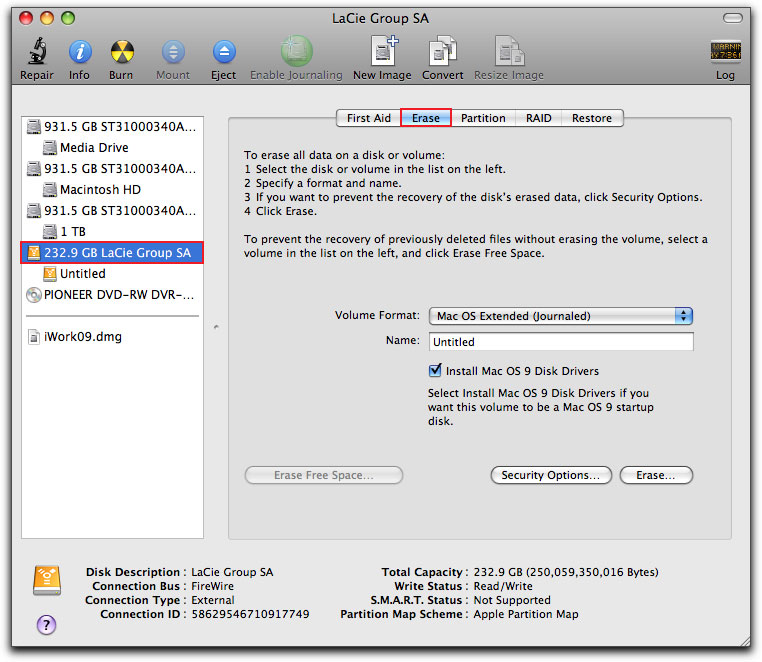

If the Security Options button is not available, Disk Utility cannot perform a secure erase on the storage device. Secure erase options are available only for some types of storage devices.

Inside, enter the 'Applications' folder and then the 'Utilities' folder. Video of the Day Step 2 Double-click on the Macs main hard drive to open its window on the desktop. (Optional) If available, click Security Options, use the slider to choose how many times to write over the erased data, then click OK. Step 1 Plug the cable attached to the WD external hard drive to the appropriate port on the Mac, for example, the USB port. If the Scheme pop-up menu isn’t available, make sure you selected the storage device you want to erase-it’s at the top of the hierarchy.Ĭlick the Format pop-up menu, then choose a file system format. Ĭlick the Scheme pop-up menu, then choose GUID Partition Map. In the sidebar, select the storage device you want to erase, then click the Erase button. If you want to erase any other type of storage device: Double-click Disk Utility in the /Applications/Utilities folder. Each volume within an APFS container can have its own APFS format-APFS, APFS (Encrypted), APFS (Case-sensitive), or APFS (Case-sensitive, Encrypted).Note: If you want to get your Mac ready to trade in, sell, or give away, and your computer is a Mac with Apple silicon or an Intel-based Mac with an Apple T2 Security Chip, use Erase Assistant. You can easily add or delete volumes in APFS containers. For example, folders named “Homework” and “HOMEWORK” are two different folders. For example, folders named “Homework” and “HOMEWORK” are two different folders.ĪPFS (Case-sensitive, Encrypted): Uses the APFS format, is case-sensitive to file and folder names, and encrypts the volume. Choose this option if you don’t need an encrypted or case-sensitive format.ĪPFS (Encrypted): Uses the APFS format and encrypts the volume.ĪPFS (Case-sensitive): Uses the APFS format and is case-sensitive to file and folder names. Each volume uses only part of the overall container, so the available space is the total size of the container, minus the size of all the volumes in the container.Ĭhoose one of the following APFS formats for Mac computers using macOS 10.13 or later.ĪPFS: Uses the APFS format. If desired, you can specify reserve and quota sizes for each volume. When a single APFS container has multiple volumes, the container’s free space is shared and is automatically allocated to any of the individual volumes as needed.

macOS 10.13 or later supports APFS for both bootable and data volumes.ĪPFS allocates disk space within a container (partition) on demand. While APFS is optimized for the Flash/SSD storage used in recent Mac computers, it can also be used with older systems with traditional hard disk drives (HDD) and external, direct-attached storage. Apple File System (APFS), the default file system for Mac computers using macOS 10.13 or later, features strong encryption, space sharing, snapshots, fast directory sizing, and improved file system fundamentals.


 0 kommentar(er)
0 kommentar(er)
